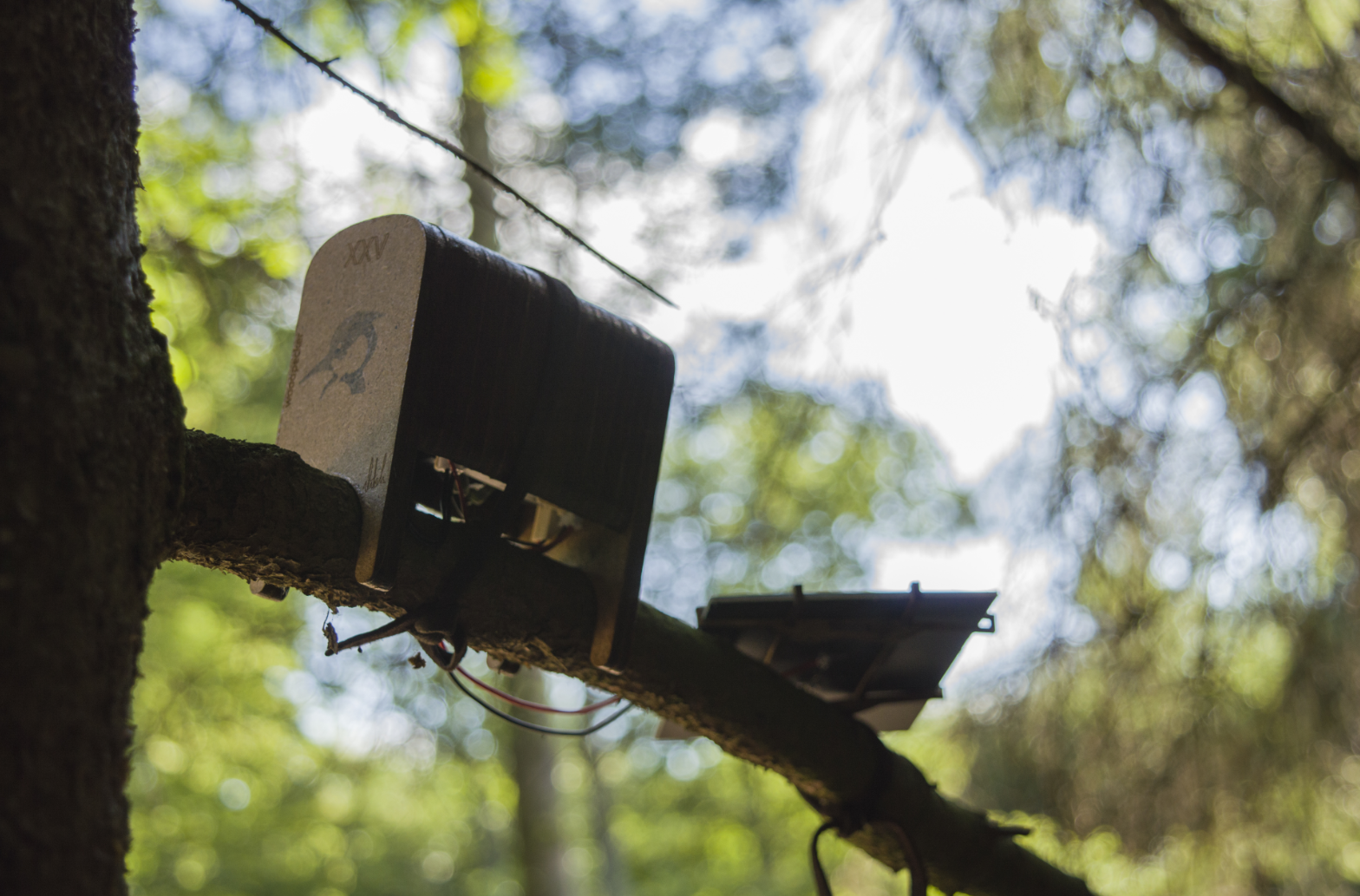
Rihards Vitols, Woodpecker, 2016. Image courtesy of the artist
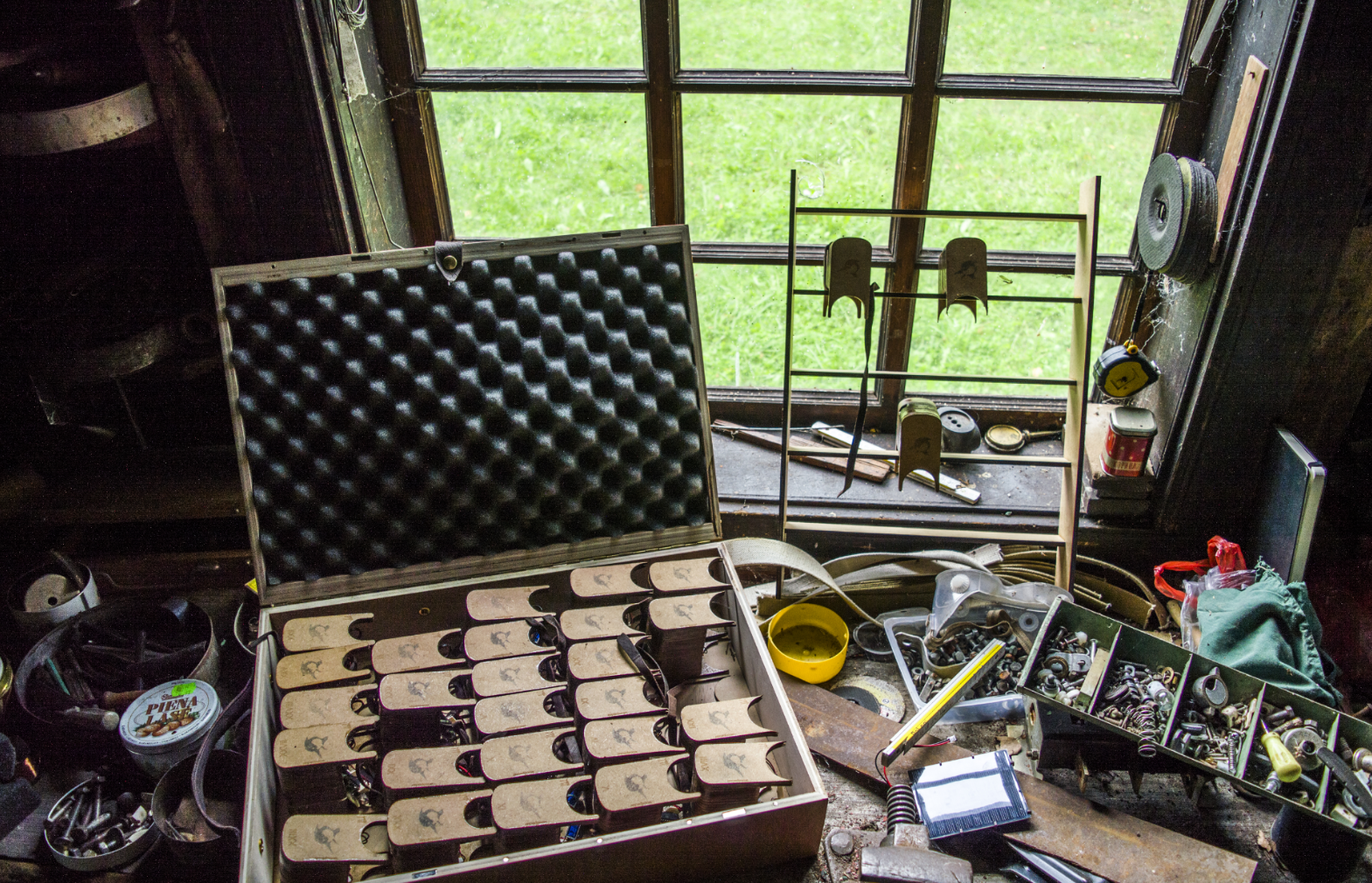
Rihards Vitols, Woodpecker, 2016. Image courtesy of the artist
In his ongoing research, artist Rihards Vitols is exploring the possibility to replace some of the bird species with artificial ones. Should bird populations decline drastically in the near future, could fake birds replace them and contribute to keeping the natural balance of a forest intact? The question might sound a bit fanciful at first but it is inspired by scientific papers about insect-eating plants, the extinction of birds species and the impact their disappearance would have on our forests.
Rihards Vitols, Woodpecker, 2016
In 1987, scientists William J. Mattson and Robert A. Haack suggested in their paper The Role of Drought in Outbreaks of Plant-eating Insects that insects can hear the sound emissions produced by trees and based on this sound determine whether or not a tree has any use for them. Trees emit sound when water is traveling from the ground and up to the branches. Periods of drought result in less sound emission and promote outbreaks of plant-eating fungi and insects, especially bark beetles and leaf feeders.
According to another, more recent, research by the World Wide Fund, birds population will severely decrease in the near future. As a consequence, insect populations will thrive and the most voracious plant-eating ones will slowly eat away our forests which in turn will result in a sharp drop in the production of fresh air on the planet.
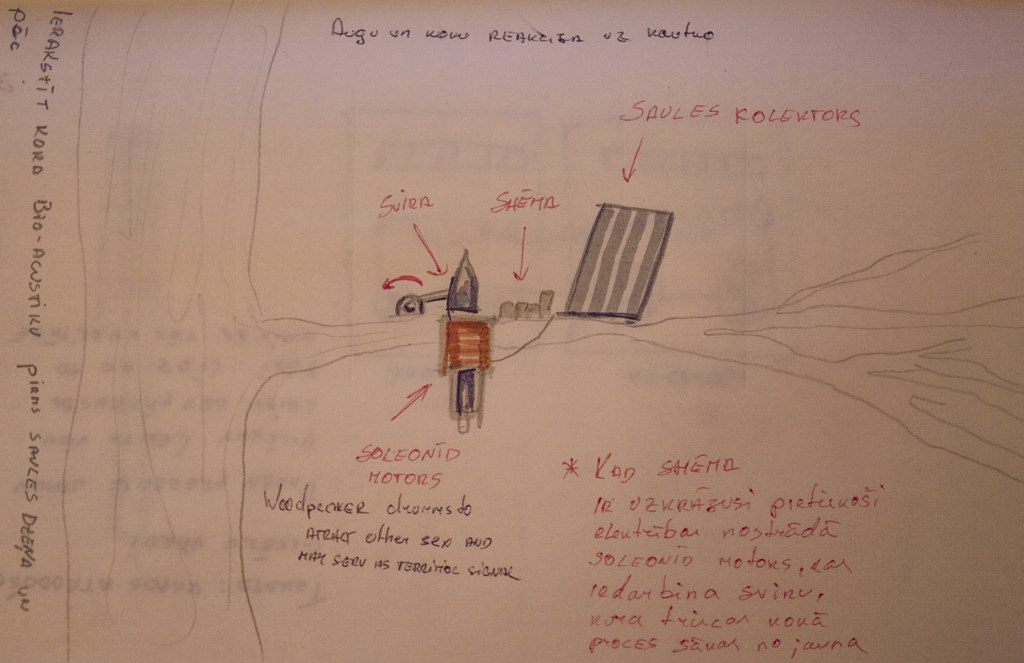
First preparatory sketch of the Woodpecker. Image courtesy of the artist
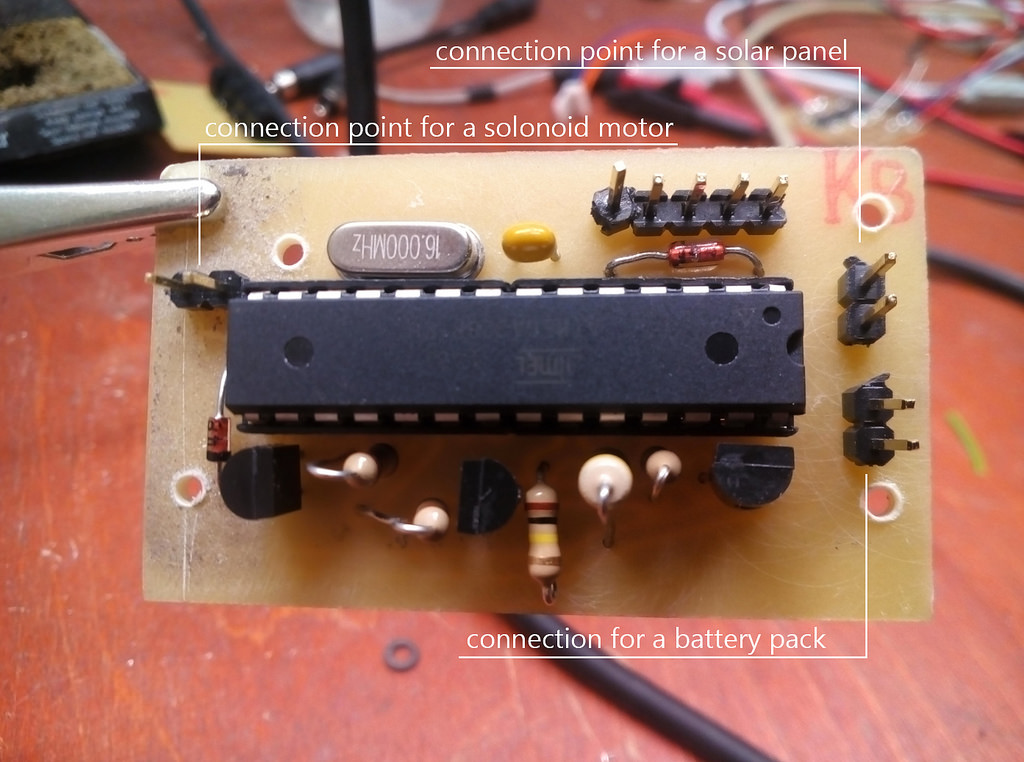
The system that controls the behavior of the bird. Image courtesy of the artist
Inspired by these two papers, Vitols started to wonder if it would be possible to replace some of the bird species with artificial ones that would scare away the plant-eating insects before they have started to take residency in a tree.
A few months ago, the artist installed 30 custom-made woodpeckers in a forest near Dusseldorf. Every week, he visited the forest, documented the ‘health’ of the artificial woodpeckers and observed how the inhabitants of the forest interacted with them.
It seems that one of his Woodpeckers might have been attacked by a squirrel but apart from a violent storm that took a couple of Woodpeckers down, nothing else disturbed the presence of the wooden birds.
More details and images about the experiment:
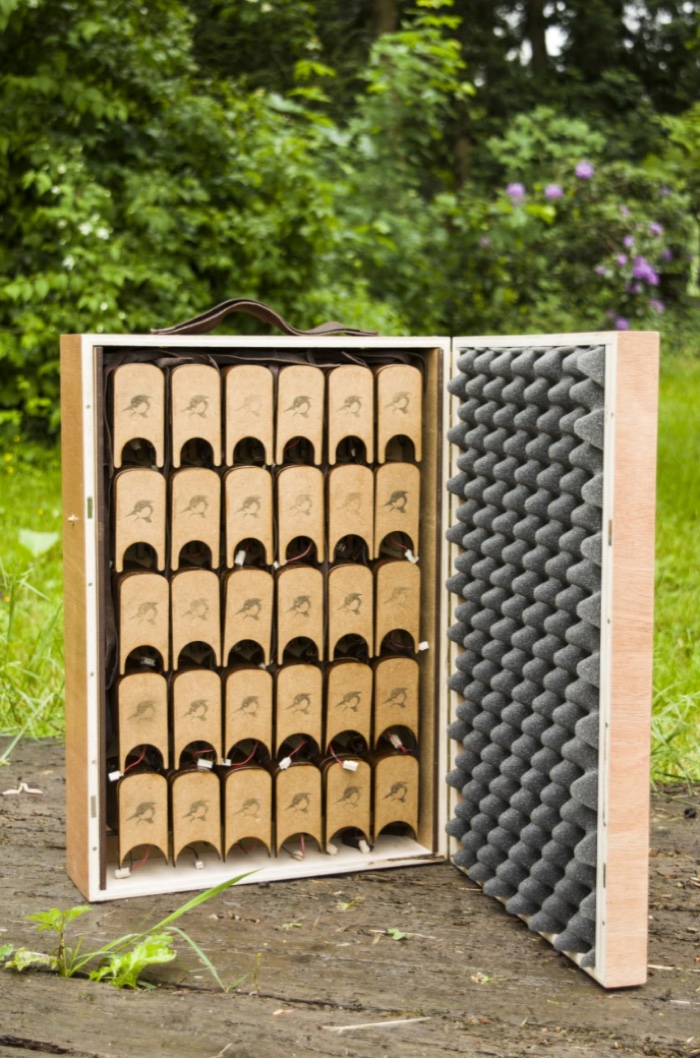
Rihards Vitols, Woodpecker (all 30 woodpeckers in a case built for transportation), 2016. Image courtesy of the artist
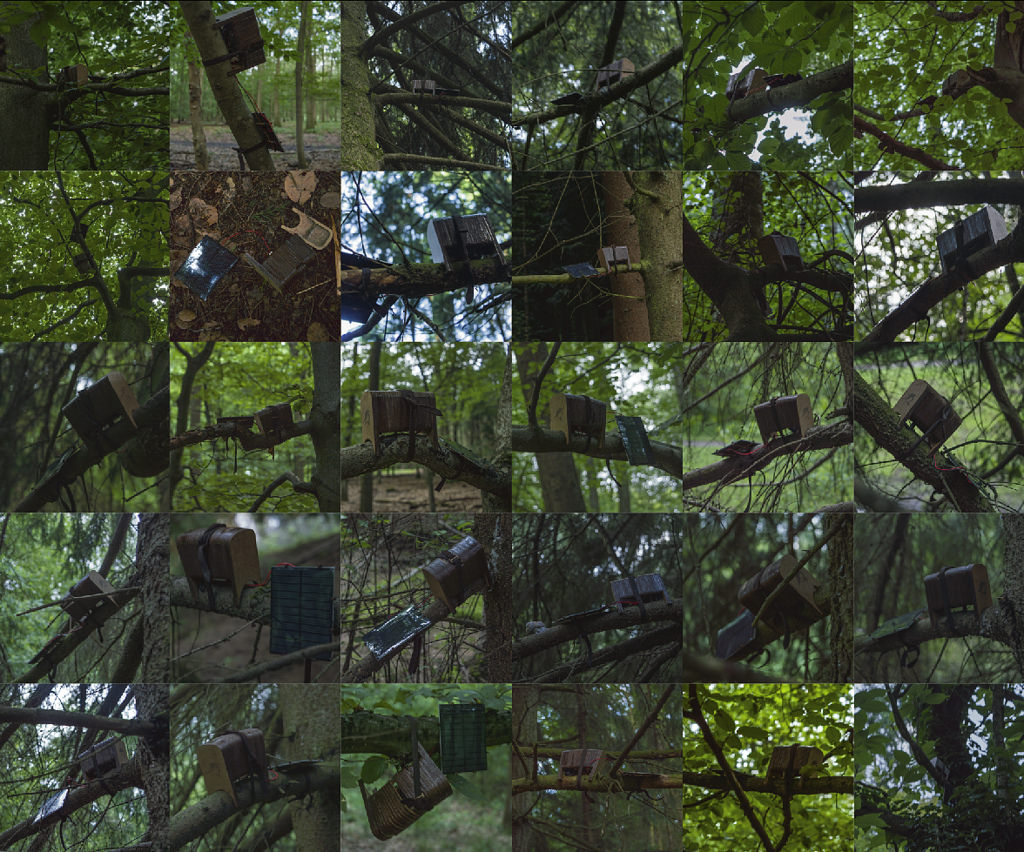
Day 1: All the Woodpeckers have just been hung in forest. Image courtesy of the artist
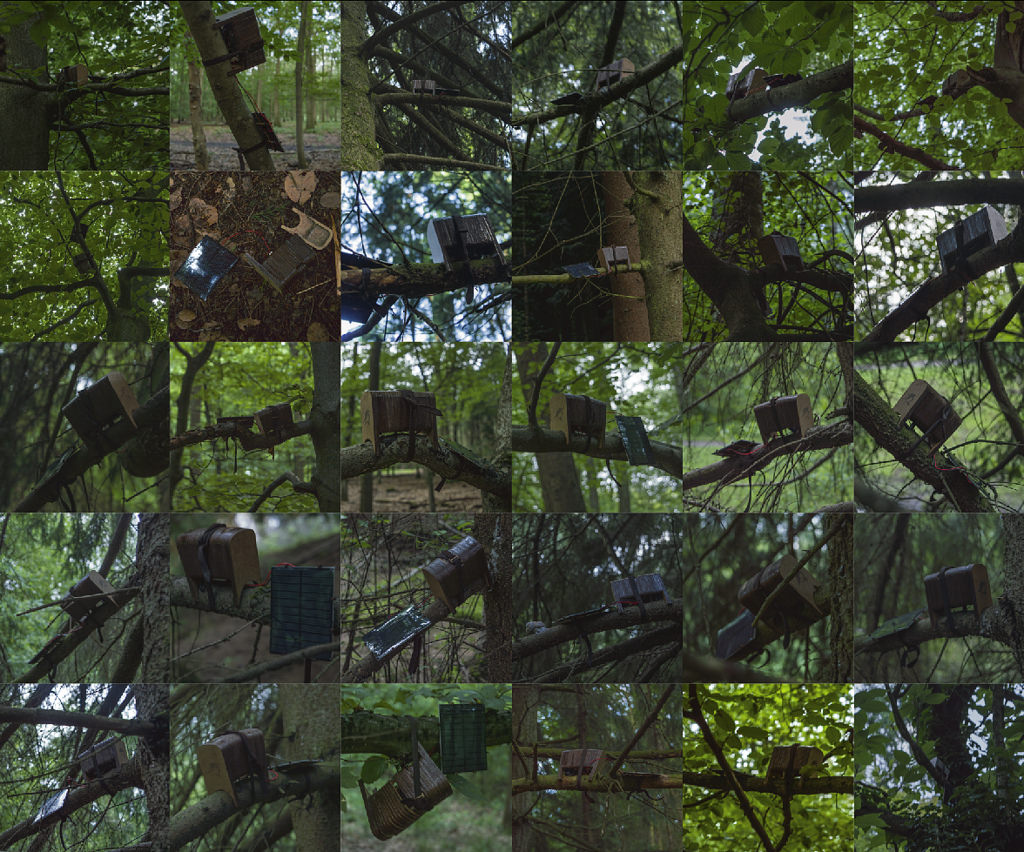
After one week: two of the Woodpeckers are damaged…
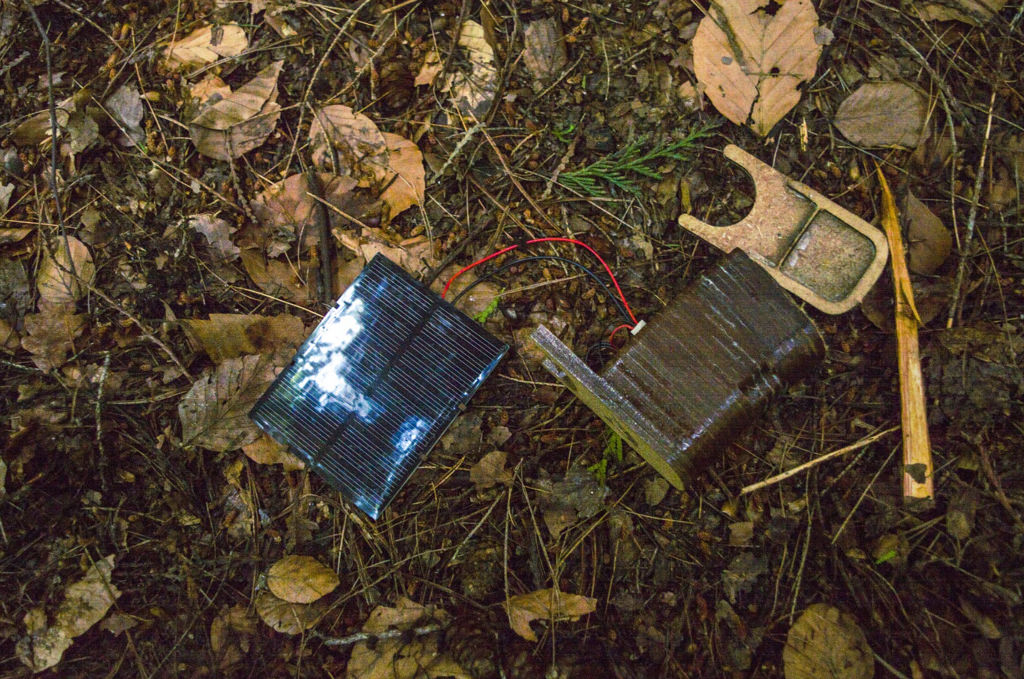
One of them was found laying on the ground. The artist suggested that it might have been attacked by an angry squirrel…
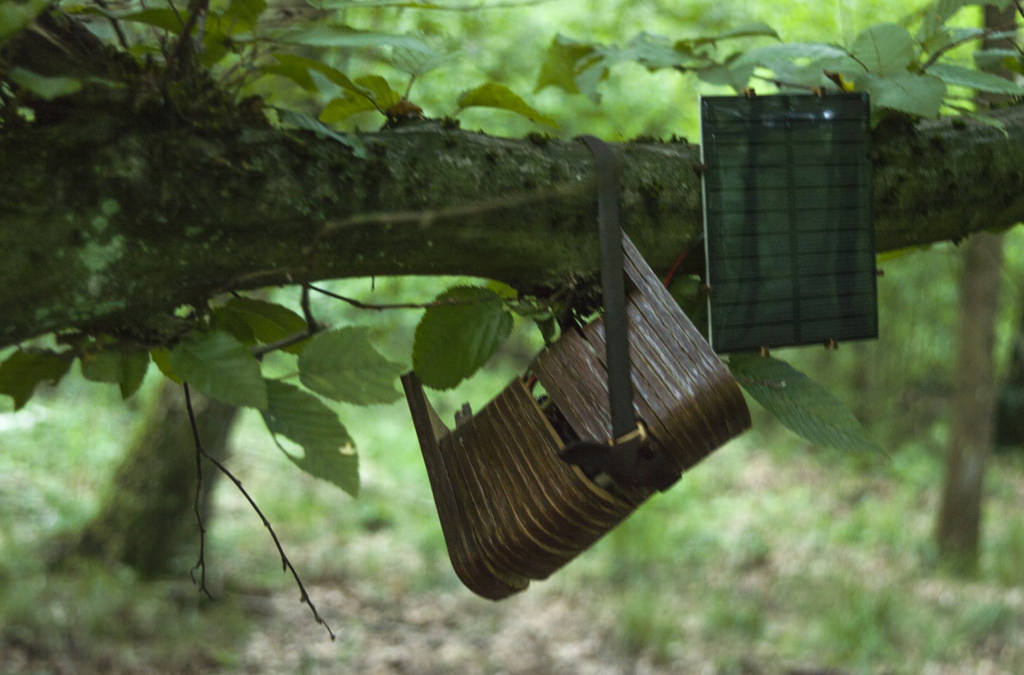
The other one was found hanging
“While I was taking it down it was still trying to hit the tree,” explains the artist. “That was emotional moment. It felt like I am holding half dead bird in my hands. And under the solar panel I found a snail that was hiding from the rain or sun.”
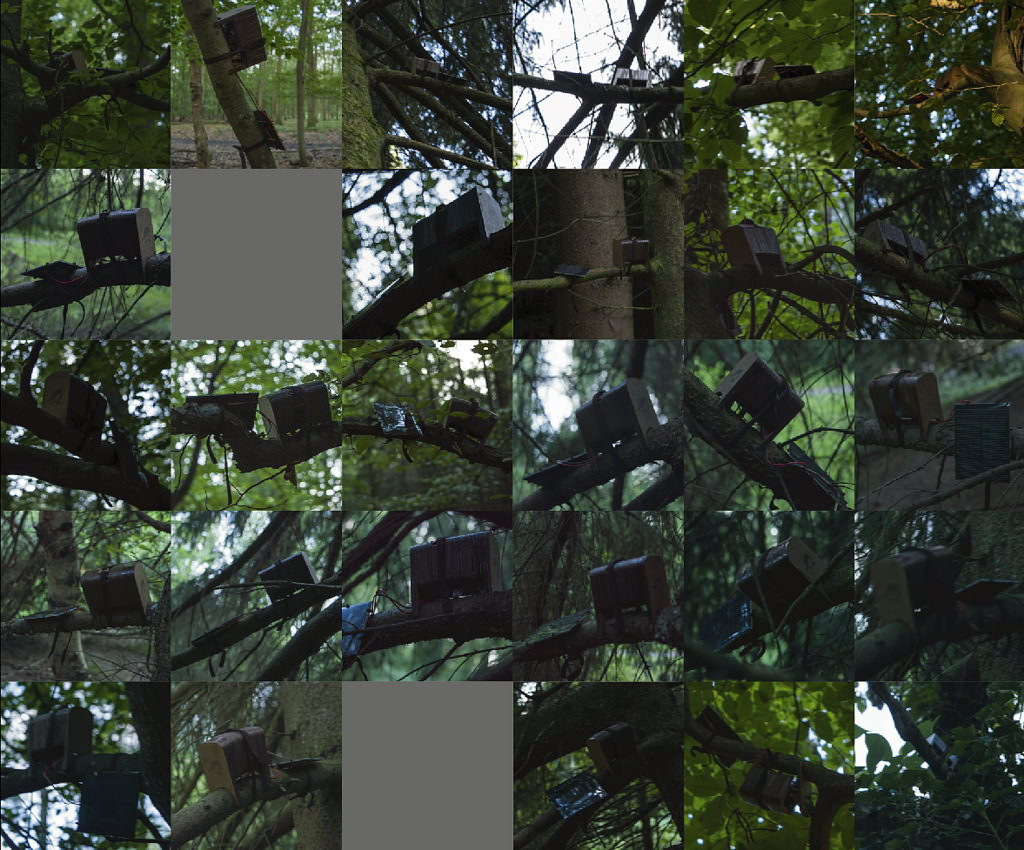
Week 2: Most of Vitols’ birds are still up and working after a storm. The grey squares show the ones that didn’t survive the bad weather conditions
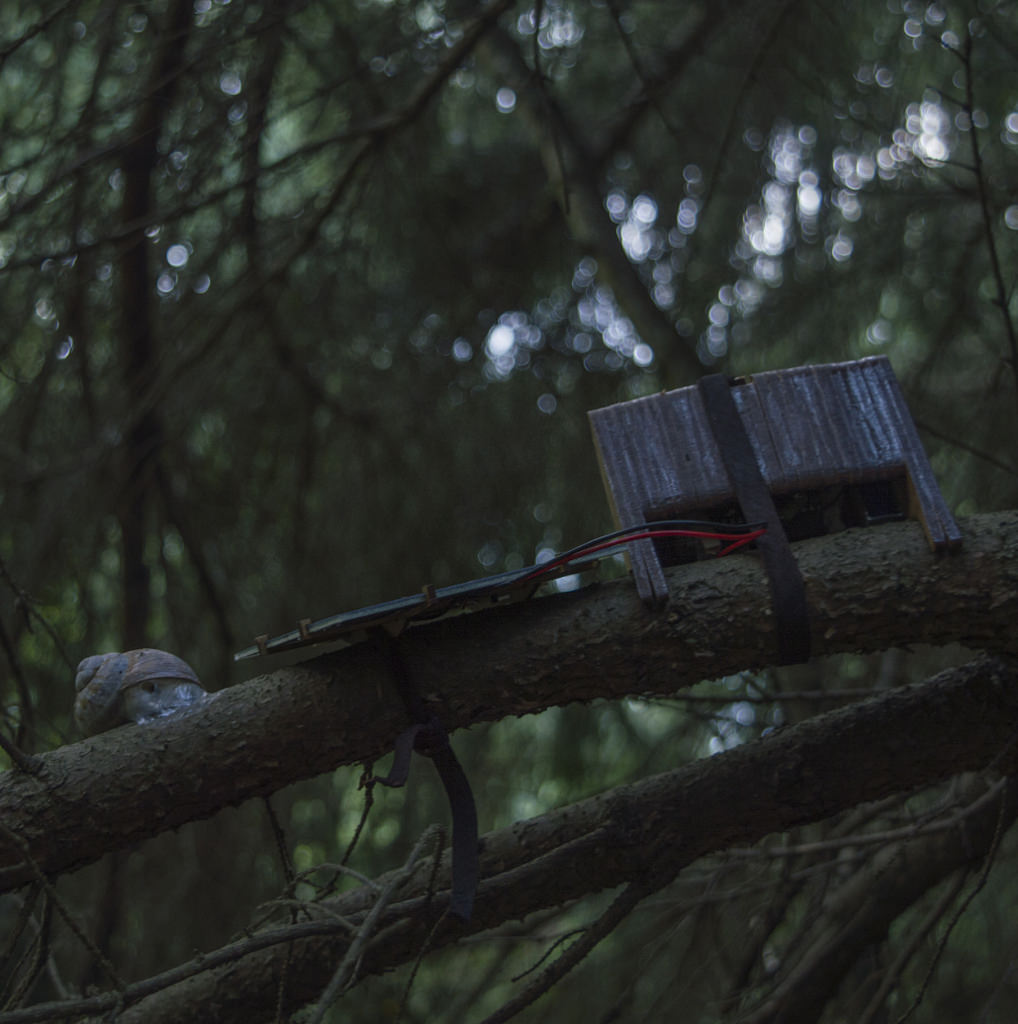
Week 4: Woodpecker at the end of the experiment. Image courtesy of the artist
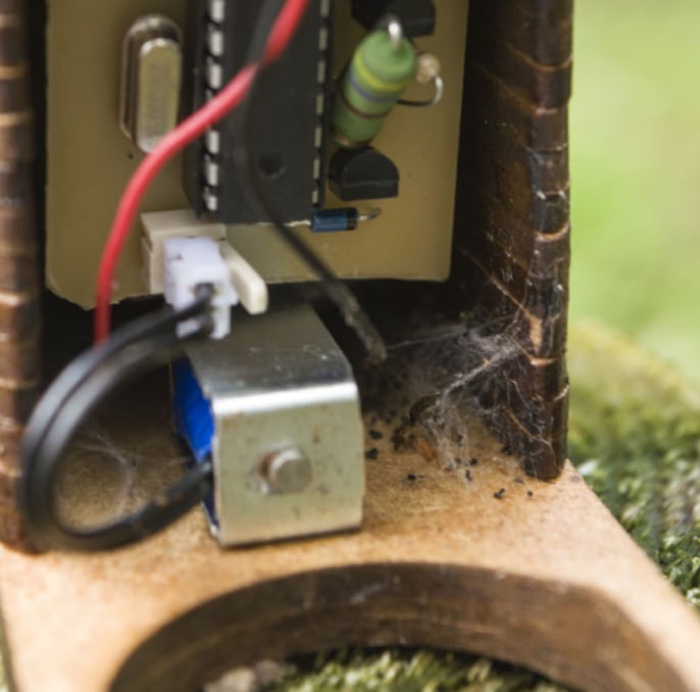
Taking down the woodpeckers: The ones which where not working (there was not a lot of sun for almost a week so the batteries did not charged properly) where being used by spiders, earwigs, moths and other insects as housing. Those who where still working were empty from insects which suggests that when working the devices do indeed keep the insects away.
Image courtesy of the artist
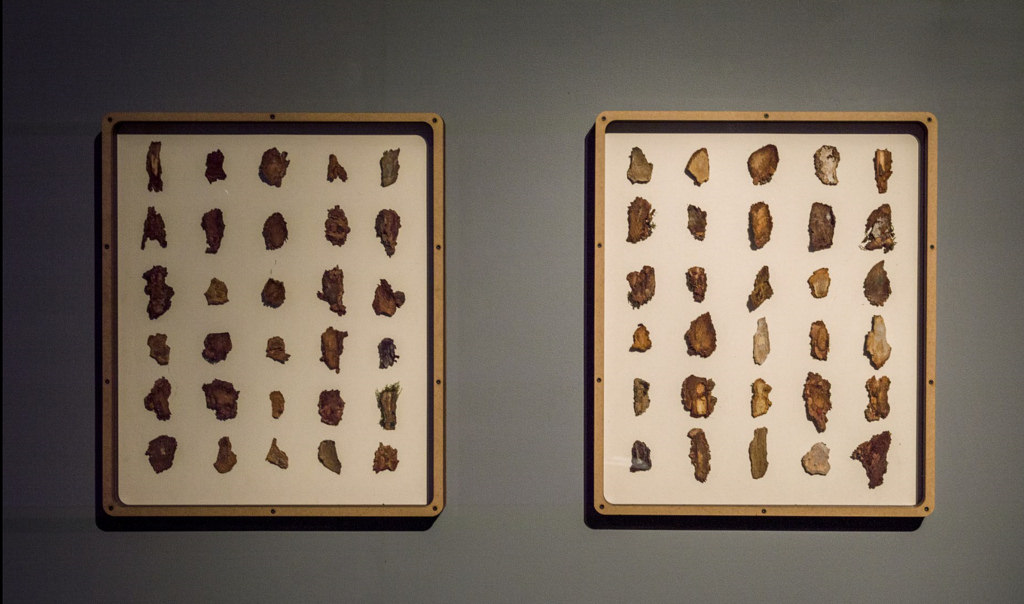
Following the suggestion of the entomologist, the artist took a small sample of the bark before he hung the woodpeckers on the tree (on the left handside.) He repeated the operation when he took the birds down (on the right handside). Image courtesy of the artist
Woodpecker is still a work in progress. Vitols will be analyzing the data collected in collaboration with a medical institution in Riga.
In September he will be traveling to the LabVerde residency in Brazil Amazon rain forest where he will further explore tree sound emissions (with the help of some new recording tools) and insect behaviour but under a very different climate.
On his return in Europe, the artist plans to build a second generation of artificial birds. They will be stronger and be monitored 24/7.
Woodpecker is currently part of the RAM (Random Access Memories) exhibition at the RIXC Gallery in Riga. RAM showcases the work of Trihars (aka Rihards Vitols, Peters Riekstins and Kristaps Biters), an artist collective interested in the interconnections between computer and environment. The show closes on 4 September 2016.
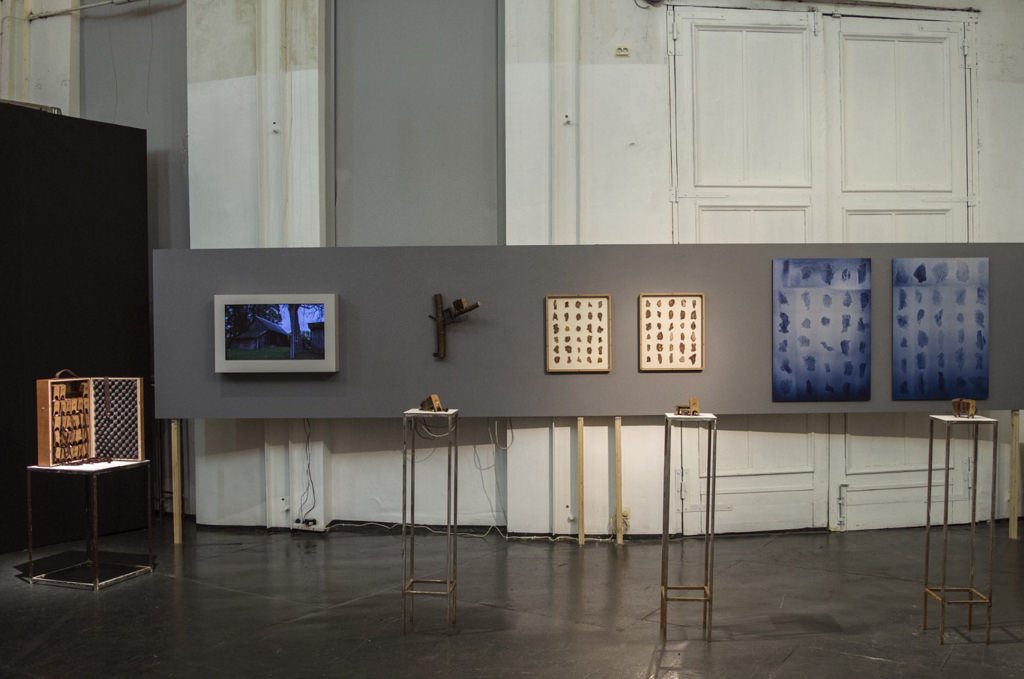
Rihards Vitols, Woodpecker, 2016. Exhibition view at RIXC Gallery in Riga. Image courtesy of the artist

Rihards Vitols, Woodpecker, 2016. Exhibition opening at RIXC Gallery in Riga. Photo: Kristine Madjare for RIXC
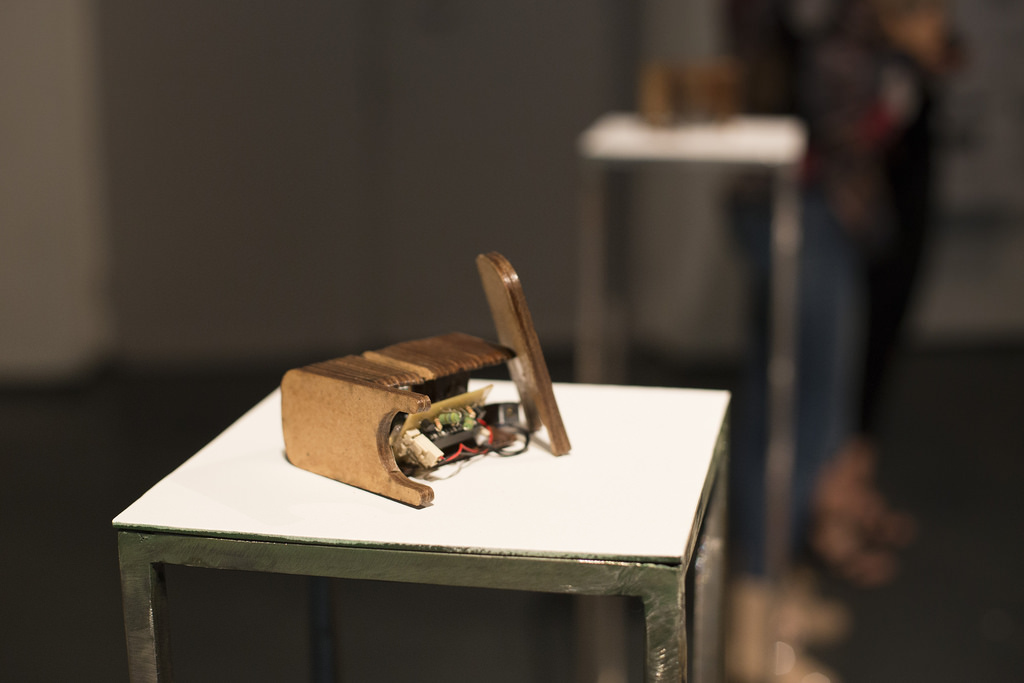
Rihards Vitols, Woodpecker, 2016. Exhibition opening at RIXC Gallery in Riga. Photo: Kristine Madjare for RIXC
Also by Rihards Vitols: akA, the ‘cloud farming’ solution.
